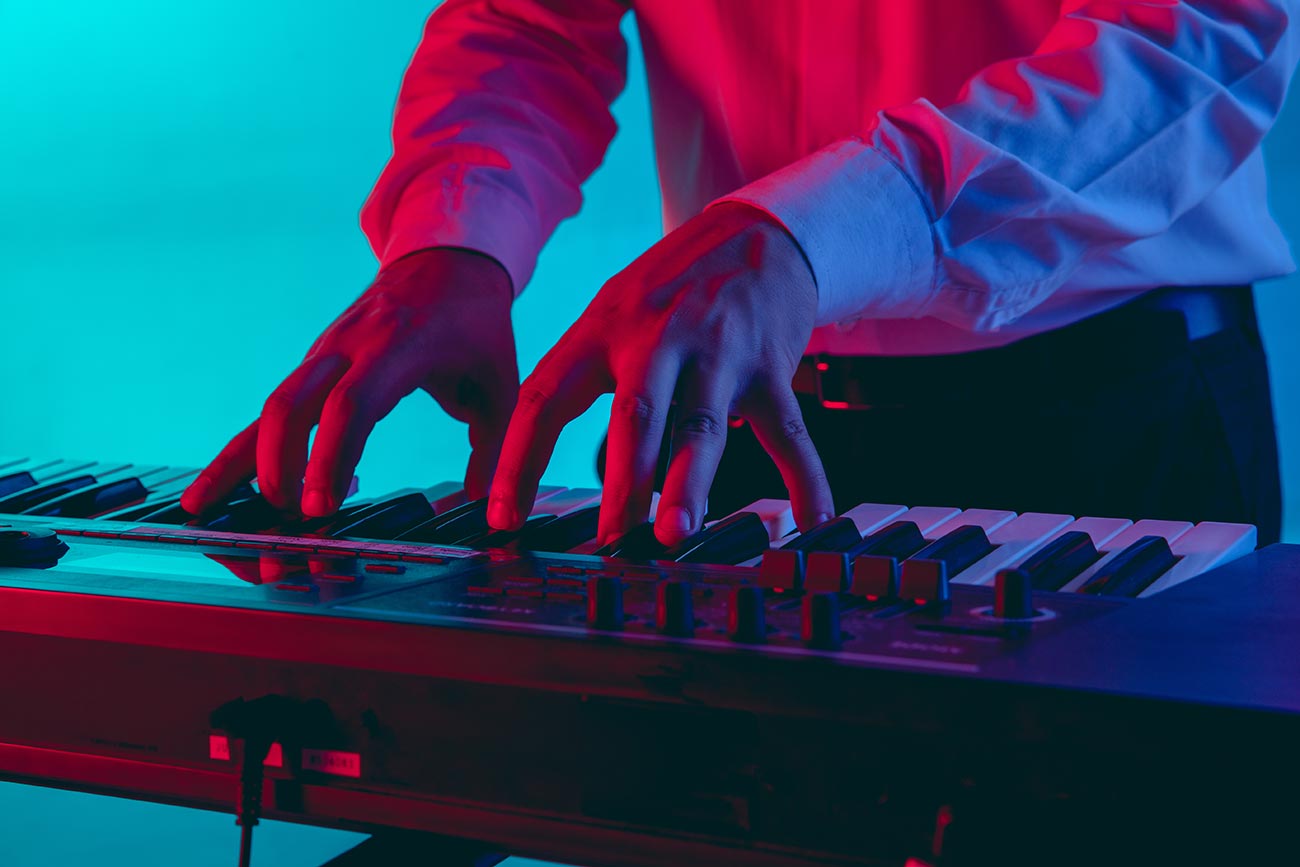-
 play_arrow
play_arrow
Clubalicious Clubalicious Radio
-
 play_arrow
play_arrow
London Calling Podcast Yana Bolder

When Matt Wallace’s manager presented him with demos from a new band called Maroon 5 and then asked about his interest in coming on board, the producer immediately saw the makings of great songs and the potential to do something “really stunning.” With a little production help, he felt, these five musicians—Adam Levine (vocals, guitar), Jesse Carmichael (keyboards), Ryan Dusick (drums), Mickey Madden (bass) and James Valentine (guitar)—could make a “classic record.”
Songs About Jane, their debut album released in the summer of 2002, became just that. While it was packed with soon-to-be hits, one of its biggest successes, “This Love,” wasn’t in that original demo collection; it was written months later, after the record company asked for some additional music.
Wallace was sold nonetheless, describing his “production help” as some basic songwriting direction to help flesh out the material, often suggesting they add some bridges, as they did on “This Love.”
“It was one of the first songs where I said it needed a bridge,” Wallace recalls. “Imagine listening to the song and only hearing verse one, chorus one, verse two, chorus two, and then that’s the end of the song except for some noodly solos at the outro. The biggest transformation was that beautifully written and sung bridge that really brought some depth and resonance to the song.”
Engineer Mike Landolt, who had been working with Wallace for a long time by 2002, remembers hearing the demos and remarking on how specular the songs were. Wallace agreed, but added that they were going to make them better. To Landolt, that meant they would be identifying a sound, and the first word that came to mind when thinking about that track was “scrappy.”
“We were trying to keep it as organic as possible and trying to blend the combination of what would be scrappy and polished; it really isn’t a polished record,” Landolt notes, adding that in engineering terms, that translated to “making the drums a little more aggressive, the bass with a little more punch, the guitar with just the right amount of distortion, and the vocal with a bit of edge on it.”
ROCKING AT RUMBO
The basic tracks for Songs About Jane were recorded live over the course of “about seven to ten days” in Rumbo Recorders Studio B. Seeking to capture the energy of the band’s live performance, monitor wedges were brought for tracking rather than headphones.

“We hardly did heavy editing,” Landolt explains, noting that drummer Ryan Dusick was excellent at playing to a click, and the objective was to always keep the best eight or 16 bars, without nipping and tucking. “Sometimes Mickey [Madden] would punch in a bass note or two, but we really tried capturing the feel of the band in those chunks.”
For Adam Levine’s vocals, Landolt brought out one of the first Bock Audio 195 microphones, given to him from the mic’s designer, David Bock. “It was awesome,” Landolt recalls. “It’s a FET mic. We also used a FET 47. The vocal chain was an original Chandler Limited LTD-1 with actual Neve boards in it, and that went into a Distressor at a real quick 2:1 ratio, and then into an LA-2A. We’d jump between those two microphones, and on any background harmony stuff, we’d use a 414 or 87.”
After laying down basics in Studio B, the team moved down the hall to Studio C for guitar, piano and vocal overdubs, though Landolt says they most likely kept pieces of Levine’s scratch vocals, too. “Nothing was ever thrown in the garbage can with us,” he says with a laugh. “That was the beautiful thing about early Pro Tools. We had the ability to go to tape and we didn’t do it. We just stayed with Pro Tools.
READ MORE: Maroon 5 Goes Immersive in Las Vegas.
“When we moved to the C room for overdubs, that was a Trident 80C compact console and we set it up to use stems out of Pro Tools,” he continues. “So we had faders up all the time, and these pieces of ‘tape,’ like an old 2-inch machine, so every time we opened up a session, we’d change the ‘tape.’ ‘Here’s an overdub thing, here are the settings for these guitars, this acoustic. Here’s a vocal chain.’ Those never changed, they always sat there, but our playback was 16 faders—kick, snare, drums, stereo keys—and we always did blending, so we had flexibility of console monitoring.”
MIXING AND RE-RECORDING
On the third day of mixing in Studio A at Can-Am Recorders in nearby Tarzana, Wallace, who was also the mix engineer on the project, received a phone call from Octone Records label head James Diener, who felt that the direction of the record had strayed too far from the original sound that had gotten the band signed. He wanted them to re-create that vibe.
So, Wallace says, they re-cut drums, bass and some of the guitars (and rescued/unmuted what guitars they hadn’t erased) on nine of the tracks. Landolt set up in Can-Am Studio B, which housed a SSL G+ console and was booked primarily for mixing. It had hardwood floors and curved plaster walls, so getting a drum sound was tricky.
“It was just one stereo pair of room mics, not by the kit,” Landolt says, noting that they were placed outside the drum booth. “The door was slightly ajar, and the sound popped out of the iso booth into the main room—this dead, tight sound, and then this explosive ambient sound.”
The same drum kit and bass setups from Rumbo were used, but Wallace and Landolt were now limited to Can-Am’s preamp selection: the SSL G+ console, a pair of Dan Alexander Audio Neves, and Landolt’s Siemens V272s and Chandler LTD-1. There were a handful of external processors to choose from—LA-2A, UREI LA-4, dbx 160VUs, Orban Stereo EQ, and the SSL processing. The mic selection included 421s, 57s, a pair of AKG 451s and an AKG 414 ULS, supplemented by Landolt’s Soundelux U195, a pair of Royer R-121s, and Shure SM81s. The setup and re-recording took roughly one and a half days. With very little editing, the new tracks dropped into the sessions nicely, Wallace says, and then they restarted the mix.
Though he believes the band had initially created a very forward-thinking record, in retrospect, Wallace admits, the label made the right call. “At the end of the day, it would have been a very influential record, but not a record that would have sold the way it did.”
Once the entire project was recorded and mixed, the label brought in Mark Endert for some additional mixing on “This Love.”
The album went to Number 6 on the Billboard charts, “This Love” peaked at Number 5 on the Hot 100, Maroon 5 went on to win Best New Artist at the 2005 Grammy Awards, and “This Love” has been streamed more than 1 billion times.
Written by: Admin
Similar posts
Recent Posts
- 🎶 New Music: JID, OneRepublic, Morgan Wallen, Post Malone, MarkCutz, Kidd Spin + More!
- Classic Tracks: The Fireballs’ “Sugar Shack”
- Classic Tracks: Arlo Guthrie’s “City of New Orleans”
- Classic Track: k.d. lang’s “Constant Craving”
- Classic Tracks: Waylon Jennings’ “Are You Sure Hank Done It This Way”
Recent Comments
No comments to show.Featured post

Latest posts

🎶 New Music: JID, OneRepublic, Morgan Wallen, Post Malone, MarkCutz, Kidd Spin + More!

Classic Tracks: The Fireballs’ “Sugar Shack”

Classic Tracks: Arlo Guthrie’s “City of New Orleans”

Classic Track: k.d. lang’s “Constant Craving”

Classic Tracks: Waylon Jennings’ “Are You Sure Hank Done It This Way”
Current show
Upcoming shows

Uplifting Only
Ori Uplift
09:00 - 11:00
Fresh Is Fresh
This Weeks Hottest Releases
11:00 - 16:00
Sugar Radio
Robin Schulz
16:00 - 17:00
Swedish Dance Chart
17:00 - 19:00

Global Sessions
By Tom Cuffia
19:00 - 20:00Chart
Powered by Dee jay promotions visit us








 Invalid license, for more info click here
Invalid license, for more info click here